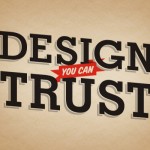Web Design Essentials
 When people think of web design, they often think of things like graphics, page layout, and attention-grabbing fonts. While these elements are certainly part of web design, the truth is that web design encompasses much more than just aesthetics. Sites that are beautifully designed, well organized and informative typically attract the most traffic in the long term because they are directed to and meet the readers’ needs.
When people think of web design, they often think of things like graphics, page layout, and attention-grabbing fonts. While these elements are certainly part of web design, the truth is that web design encompasses much more than just aesthetics. Sites that are beautifully designed, well organized and informative typically attract the most traffic in the long term because they are directed to and meet the readers’ needs.
The following six web design essentials can help you design an attractive, user-friendly website with the potential to succeed:
Navigation. This pertains to how people will get around on your site. Most web users are on a quest to find information. The most successful and popular websites are straightforward and easy to use, so the design of your website should be as simple and intuitive as possible without being bland. Good navigation is the answer. Use primary navigation, secondary navigation, text menus, internal links, search boxes and breadcrumbs wisely throughout your site to ensure your site visitors can easily find what they are looking for. You should also make sure that your website’s navigation bar is located in the same place on every page, whether it is along the top of the screen, down the left side of the screen or elsewhere. Websites with a navigation bar that is located in a different place on different pages are more complicated to navigate and generally have less traffic as a result.
[ more: 4 Things You Should Know Before Hiring A Web Designer]
Leading the eye. In addition to navigating through the site, you must also help visitors determine how to focus their attention on each page. You must “lead the eye,” so to speak, by strategically applying weighting, placement, positioning, spacing, and highlighting techniques to guide your visitors from areas of primary importance to supporting, or secondary, areas. Create headings or bolded topic sentences to make it easier for your readers to locate specific information. Include bullets and numbered lists where appropriate.
Typography. The type and size of font you use will greatly impact the user experience, and will go a long way in creating the impression you want (or even one you don’t want, if you are not careful). Consider using sans-serif fonts such as Verdana. Instead of selecting a particular font size, choose a relative size such as large, normal or small so that your readers can adjust the size if they need to in order to read it. Additionally, you must consider line spacing, text effects, line length, paragraph size, and emphasis (italics and bold) when placing your typography. Stay away from busy backgrounds or those with gradients because they can make portions of the text difficult to distinguish.
Clarity. While it may be tempting to pack your website with all the neat graphics and informative content you can, it is more important that your site visitors can easily ascertain what is on your page. Keep in mind that simplicity is almost always preferable over complexity when it comes to web design, and that too many visuals (and/or too much information) could end up looking like nothing more than a jumbled mess to your site visitors.
Search engine optimization (SEO). You can create the most stunning website ever, but what good is it if know one can find you? Quality content attracts the attention of search engines such as Google. As a web designer, you should create content that has wisely chosen keywords with an appropriate keyword density in relation to the word count. When you create your web pages, consider which keywords your readers might use to find the information they’re looking for that you provide on your site. When it comes to website design, good SEO practices include using alt text for images, no-following outbound links that are irrelevant to the site, and labeling page titles and headers effectively.
Compatability. Compatibility is an important web design benchmark. In simple terms it’s the ability for users to access your website. Browser compatibility, page loading speed, mobile compatibility and screen resolution all play an important part in compatibility.
Making a beautiful and well-performing website that draws traffic is a lofty but achievable goal with many rewards. You can learn the skills you need to create a beautiful website by earning a degree in graphic design or you can hire professional like The Kool Source to handle all of your logo and web design needs. We can be reached by phone, at 404-953-5665, or email: info@thekoolsource.net
6 Web Design Essentials
No comments:
Post a Comment